For an Arctic Bird, the Adirondacks are "South"!
In the Adirondacks, most of our breeding birds migrate away for the winter. Many arctic species also head south, and fortunately for us, it brings them to the Adirondacks! Some of these species spend the winter in our area every year, and some regularly or irregularly "irrupt" in large numbers. Common Redpolls irrupt every other winter. Movements are all about food, and when the birch catkin crop fails to our north, the redpolls head south. This typically occurs every other winter. This winter is predicted to be a "redpoll winter" in the Adirondacks!
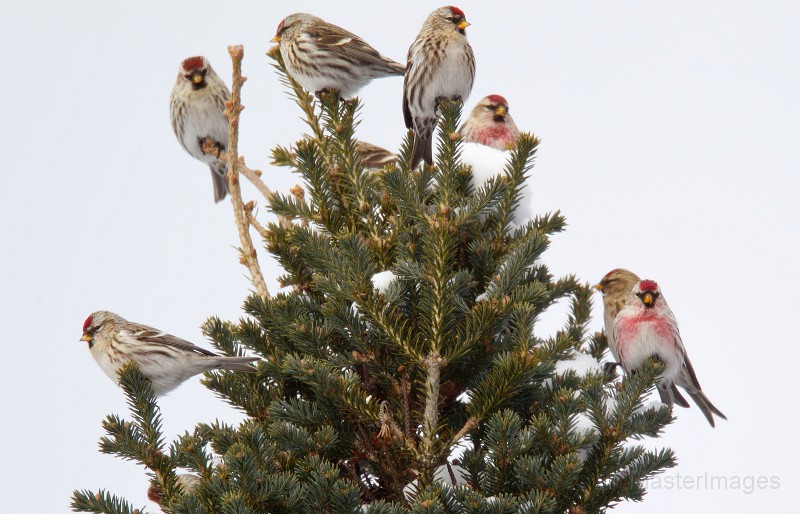
A Delightful Bird!
There are many adjectives used to describe Common Redpolls: delightful, adorable, energetic, fascinating, intriguing, active, social, vocal, endearing, etc. However you describe them, if you are fortunate enough to have huge flocks of chattering redpolls at your feeders, it is sure to be an entertaining winter! They are wonderful winter companions.
As their name implies, Common Redpolls have red caps. Male redpolls have red colored breasts, and both males and females have black chins.
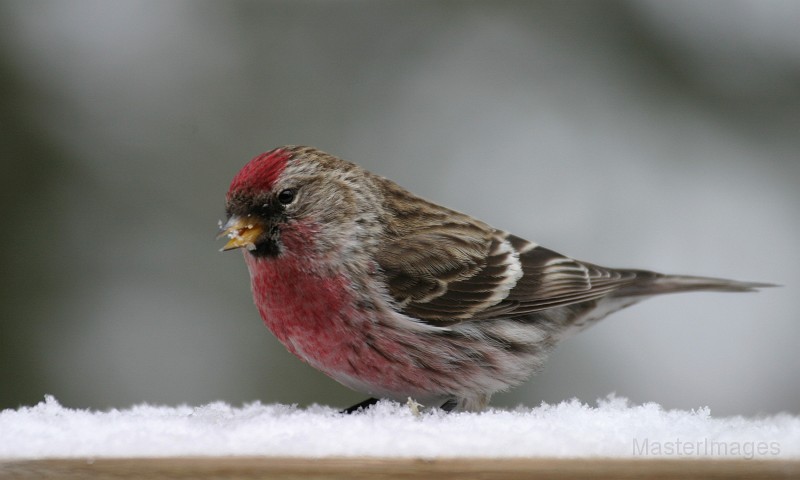
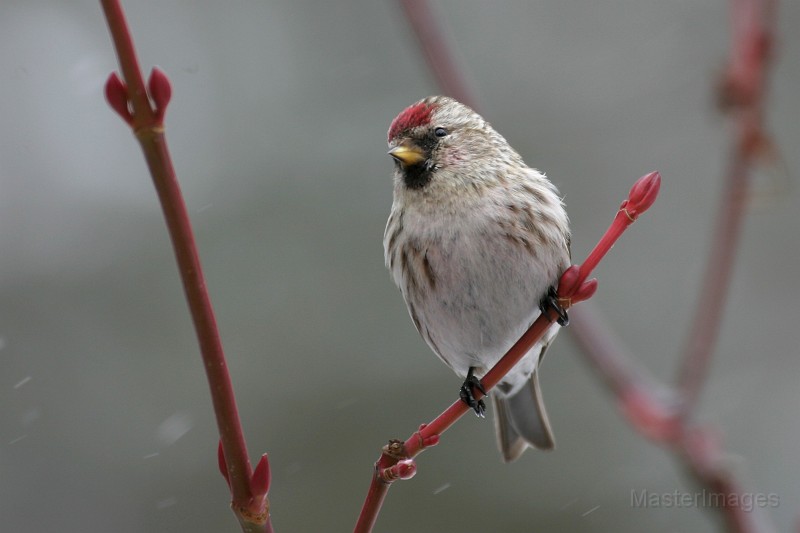
Common Redpolls are members of the finch family. In North America, they breed in arctic, sub-arctic, and taiga regions from Alaska to Newfoundland.
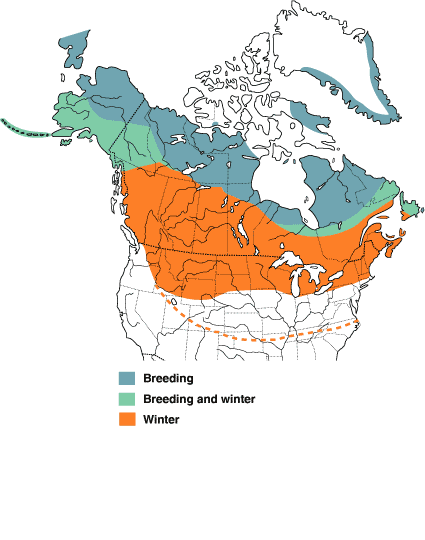
A True Snow Bird
The winter realm of Common Redpolls is snow. The more it snows, the more energetic they become. Their bodies are geared for cold, and they actually suffer in warm temperatures. They can withstand temperatures to -54 degrees Celsius. The photo below was taken on January 14, 2004 when it was 30 below zero at our Long Lake home. The redpoll's feathers are so fluffed up that it appears to be a ball!
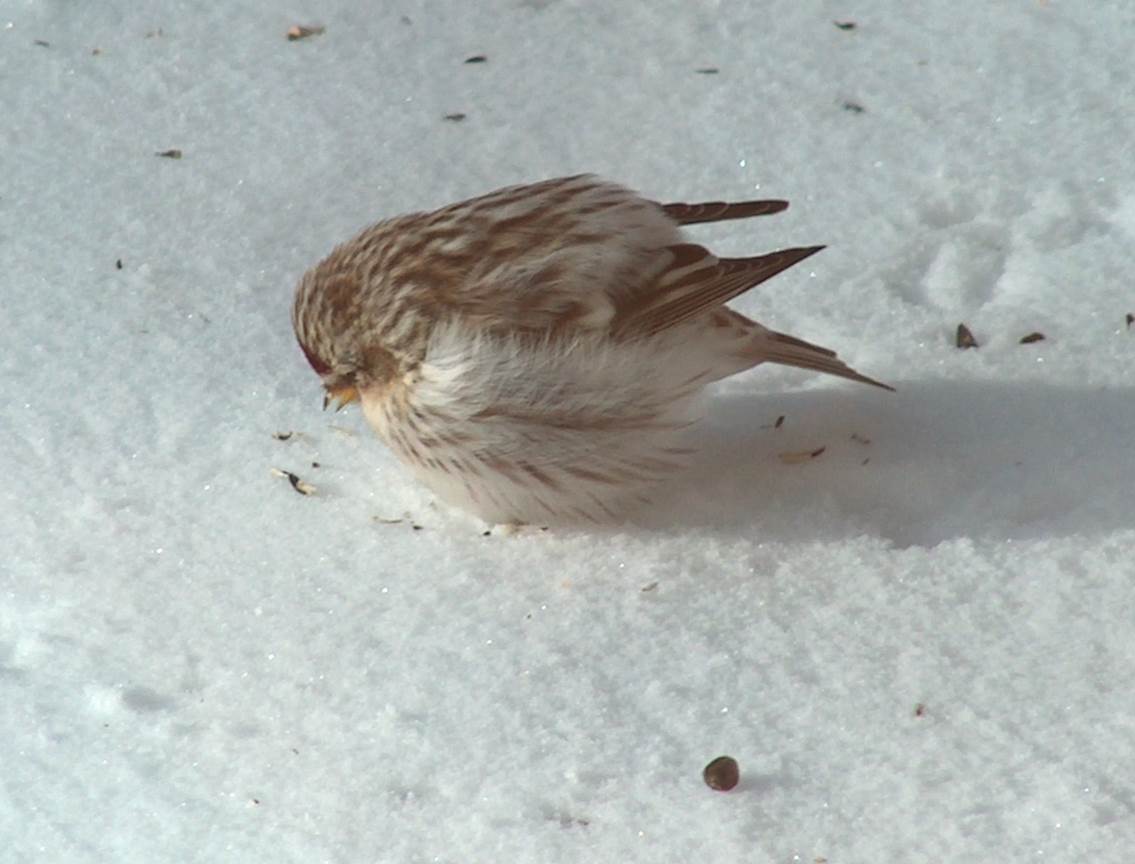
Common Redpolls particularly favor thistle seed at feeders, but they will also eat sunflower seeds. When taking seeds away from our feeders, redpolls seek out snowy places to eat. They do this so often that they pack down the snow at the ends of fir tree branches creating what appears to be "snow nests." When dozens of redpolls do this in the same tree, they look like Christmas ornaments at the end of all the branches!
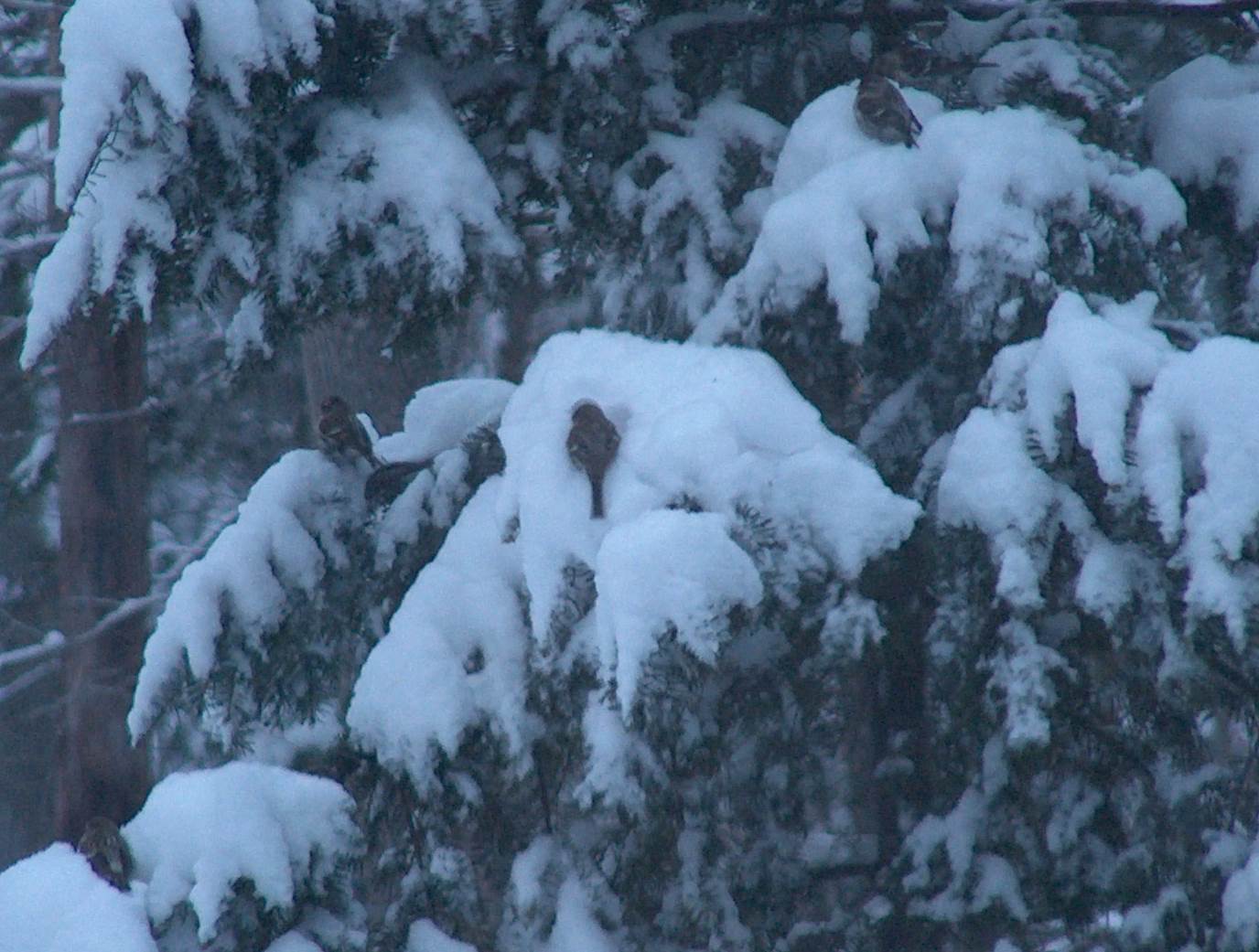
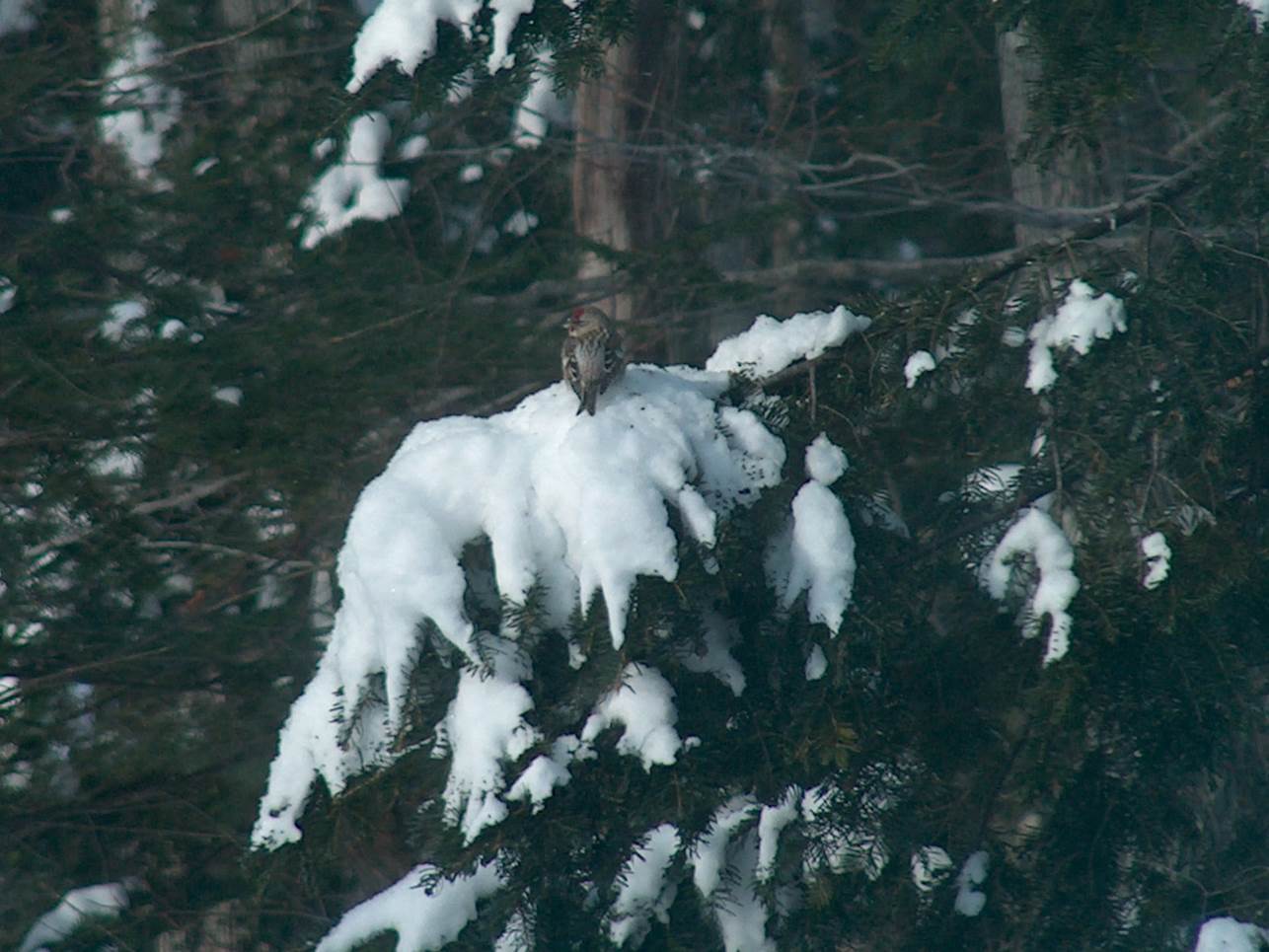
Redpolls have a unique way of storing food. Seeds can be stored in diverticular, which are laterally expandable sections of their esophagus. Especially in winters when they remain in the north, the amount of daylight is short. Storing seeds for later regurgitation allows a sheltering bird to save a great deal of energy.
The Mystery of Snow Burrowing Redpolls
For many years I have been documenting the snow burrowing behavior of redpolls, one of the most perplexing animal behaviors that I have ever witnessed. In irruptive years, we have huge flocks of redpolls visit our feeders – often 300 to 500 birds. As the birds work into a frenzy of activity, a couple dozen will break away and begin to burrow in the snow. They use their heads to dig and kick with their feet. Redpolls often pick the slanted snow surface of roofs, but will also burrow on the ground or along snowy tree branches. They disappear just under the surface of the snow, so the burrows are not deep. Sometimes they will tunnel for several feet. You can watch their dark bodies moving along just under the snow surface! They are usually only in the burrows for a few seconds and the longest I've seen them under the snow was about 3 minutes.
Remarkably, they communicate with each other while they are all in separate snow burrows. They will disappear, and somehow, one will give a signal that they all need to depart at precisely the same instant. It is quite a sight to see them burst out of the burrows all at once!
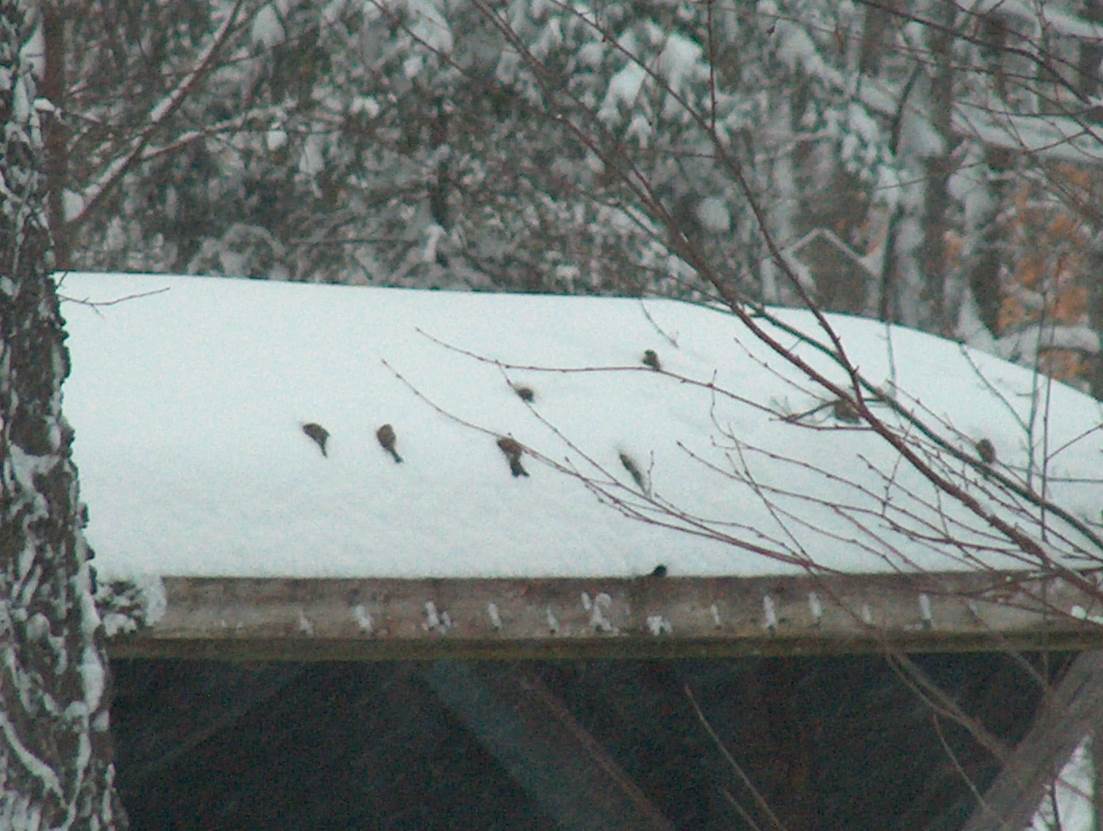
The snow burrowing behavior appears to be social and redpolls also fight over the burrows. I have had many theories over the years for why redpolls burrow in snow, but I have disproven them all with further observation. Years ago, I gave a presentation at the Cornell Lab of Ornithology and showed videos of the snow burrowing behavior. Hands immediately flew up with the scientists speculating on "why" they do it. I have had all those theories and I have come to the conclusion that I may never know why redpolls dig in the snow.
Due to an observation of early morning snow burrowing by redpolls in Alaska, an incorrect assumption was made that redpolls spend the night under the snow. They don't! They spend the night in trees like other songbirds. A researcher in Europe actually proved that redpolls quickly die under the snow. But somehow the assumption is still out there and referenced in the redpoll literature.
Feisty Birds
Redpolls battle each other over many things – perches at feeders, snow burrows, and locations on the snow for seed-eating. To show aggression, redpolls lean forward and tip their head up so they can show their dark chin to the bird they are challenging. Sometimes it works and the challenger backs down, and sometimes the challenger simply leans forward and shows its black chin back at the aggressor.
Hoary Redpolls
Often, Hoary Redpolls will show up with Common Redpolls. Generally, there is usually one Hoary Redpoll among every group of 100 Common Redpolls. During the 2013 irruption, we had a flock of 300 Common Redpolls at our feeders and 3 Hoary Redpolls mixed in. The Hoary Redpoll is a bit larger, much frostier, has a shorter bill, a hunchbacked appearance, finer side streaks, and a white (unstreaked) rump. It breeds even farther north than the Common Redpolls.
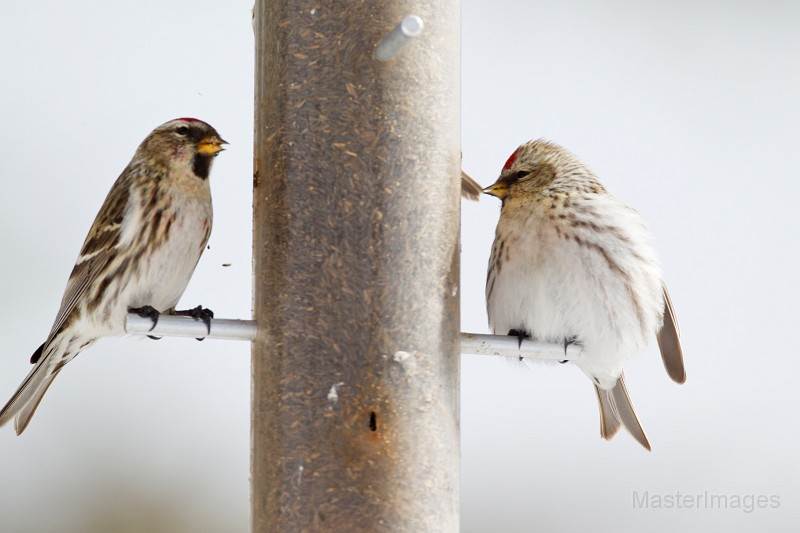
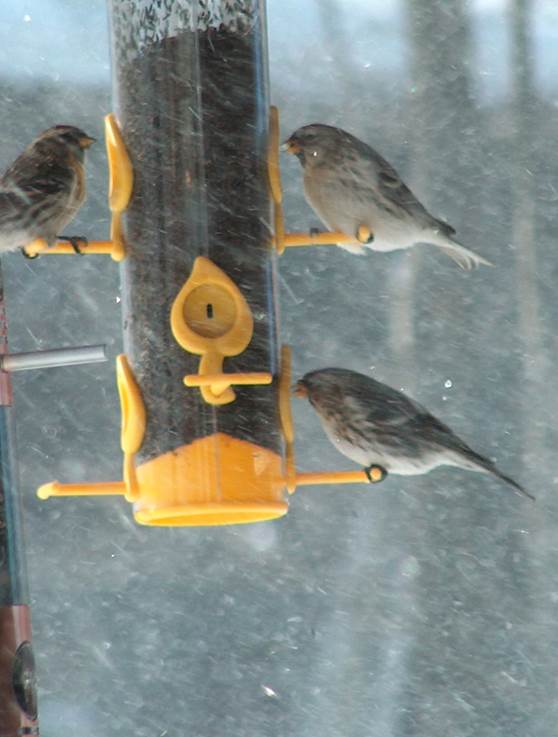
Aberrantly Plumaged Redpolls
One winter, we had two different aberrantly plumaged Common Redpolls at our feeders. One reminded me of a colorful puffin, so I dubbed it the "Puffin-poll," another was lacking side streaks.
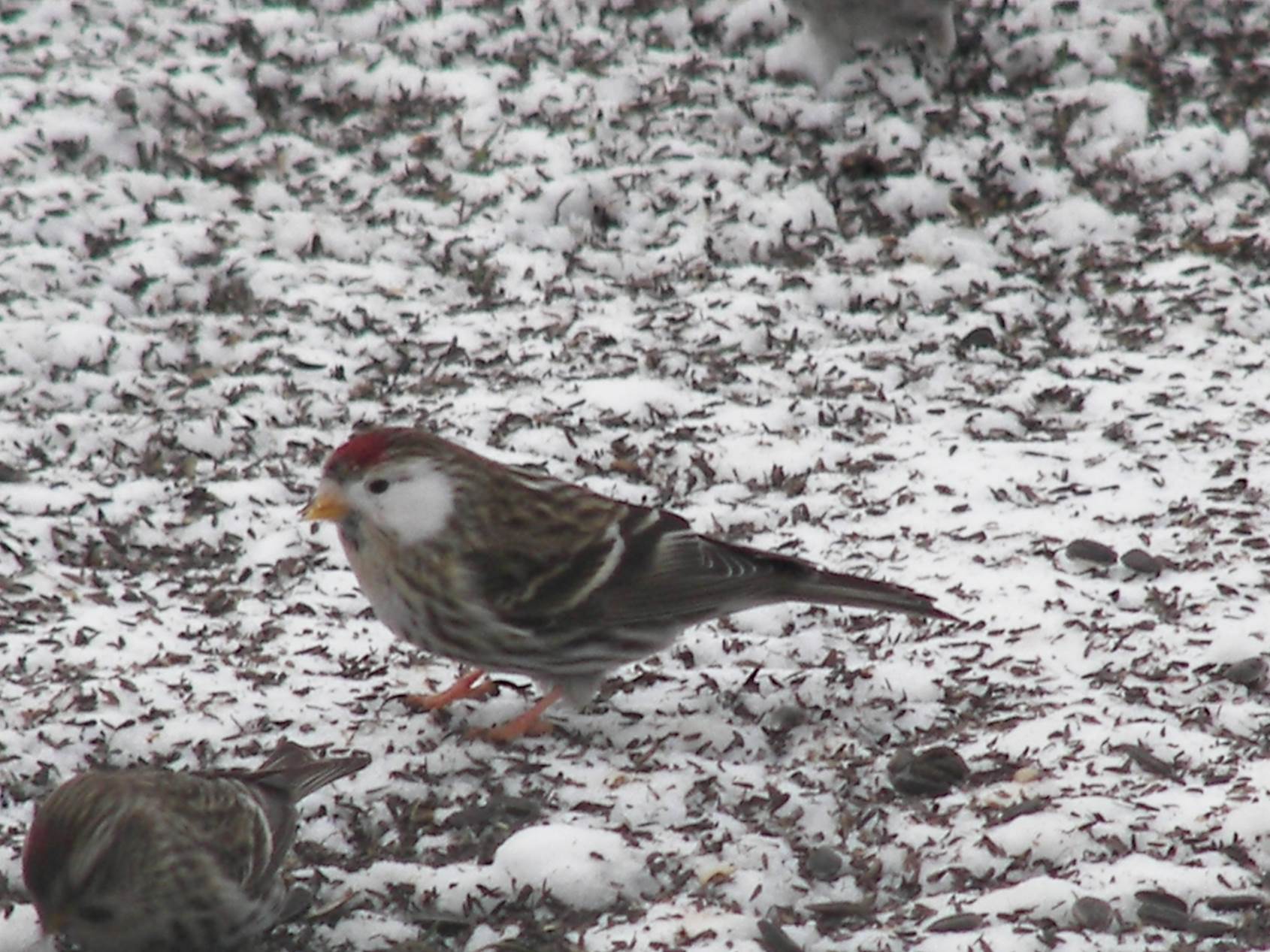
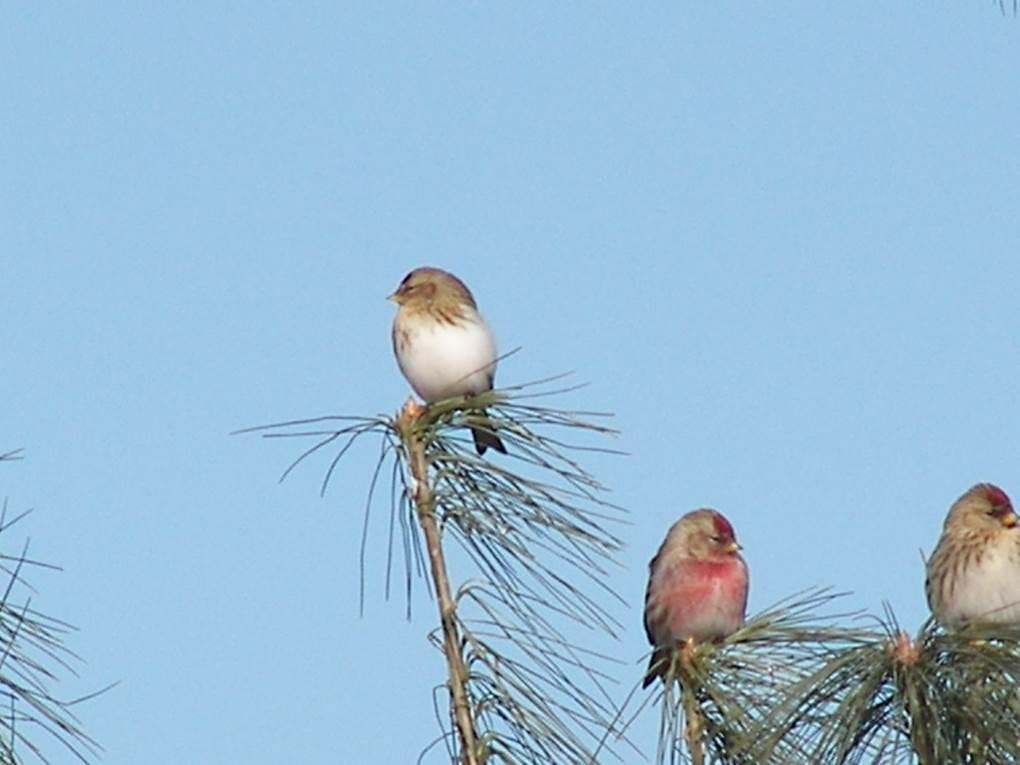
So keep an eye out this winter for Common and Hoary Redpolls in the Adirondacks. Look for them in birch trees feeding on catkins and at feeder locations.
If you plan to visit this winter, there are many lodging and restaurant options for a warm and enjoyable stay in the mountains! Planning to visit us at a different time of year - read more about Autumn birding in Hamilton County, or pick up some great Adirondack literature at one of our traditional Adirondack stores.






